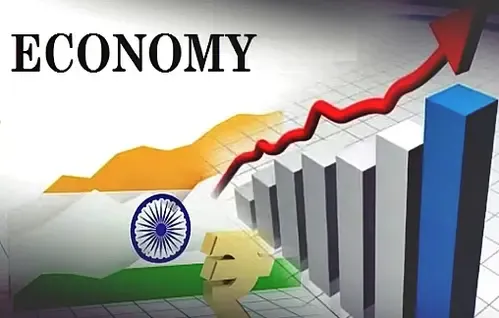Will Nomura's Growth Forecast for India Remain Steady at 6.2% for FY26?

Synopsis
Key Takeaways
- Nomura's GDP growth forecast for FY26 is 6.2%.
- Proposed GST reforms aim to simplify the tax structure.
- Potential for disinflationary effects on consumer prices.
- Households may delay purchases in anticipation of lower tax rates.
- High-revenue goods are likely to remain in higher tax brackets.
New Delhi, Aug 20 (NationPress) Nomura has upheld its forecast for India's economic outlook in FY26, estimating a GDP growth rate of 6.2 percent and a consumer price inflation rate of 2.7 percent.
This assessment from the Japanese financial services giant arrives as the government gears up for a significant overhaul of the Goods and Services Tax (GST) framework — a reform that has been in discussion for several years.
At present, GST is categorized into four slabs — 5 percent, 12 percent, 18 percent, and 28 percent. The Centre has proposed a restructuring that would streamline these into two main slabs: 5 percent and 28 percent, while also introducing a new rate of 40 percent for sin and luxury goods.
Although the removal of the 12 percent and 18 percent categories could theoretically reduce GDP growth by 0.19 percent, states are likely to resist this change, fearing revenue losses without suitable compensation.
Experts predict that policymakers will safeguard high-revenue goods and services by keeping them in the elevated tax category.
Nomura emphasized that the fundamentals of income and employment are crucial drivers for consumption. Tax reforms that enhance households' disposable income may foster savings, while consumer demand could fluctuate over time.
The brokerage anticipates an initial decline in purchases as households hold off in anticipation of lower tax rates, followed by a surge in demand during the festive season in October–November.
Regarding inflation, the proposed rationalisation could have significant disinflationary effects.
Approximately 22 percent of items in the Consumer Price Index (CPI) basket are currently taxed at 12 percent, while 5 percent face the 28 percent tax rate.
However, Nomura warns that prices may not drop instantly, recalling the 2017 instance where companies raised prices ahead of GST modifications and passed on only a portion of the tax reductions to customers, thus increasing profit margins.
The decision-making will soon transition to the political sphere. A Group of Ministers (GoM) will convene this week to evaluate the proposal, followed by a GST Council meeting scheduled for September.
If a consensus is reached, the new tax structure could be implemented by Diwali.
From a fiscal standpoint, the largest indirect tax revenues for the government are generated from goods and services taxed below 18 percent, which are unlikely to face significant disruption.
With high-yield items remaining in the upper tax bracket and the existing compensation cess likely to be substituted with a new levy, Nomura has maintained its fiscal deficit forecast at 4.4 percent of GDP.









